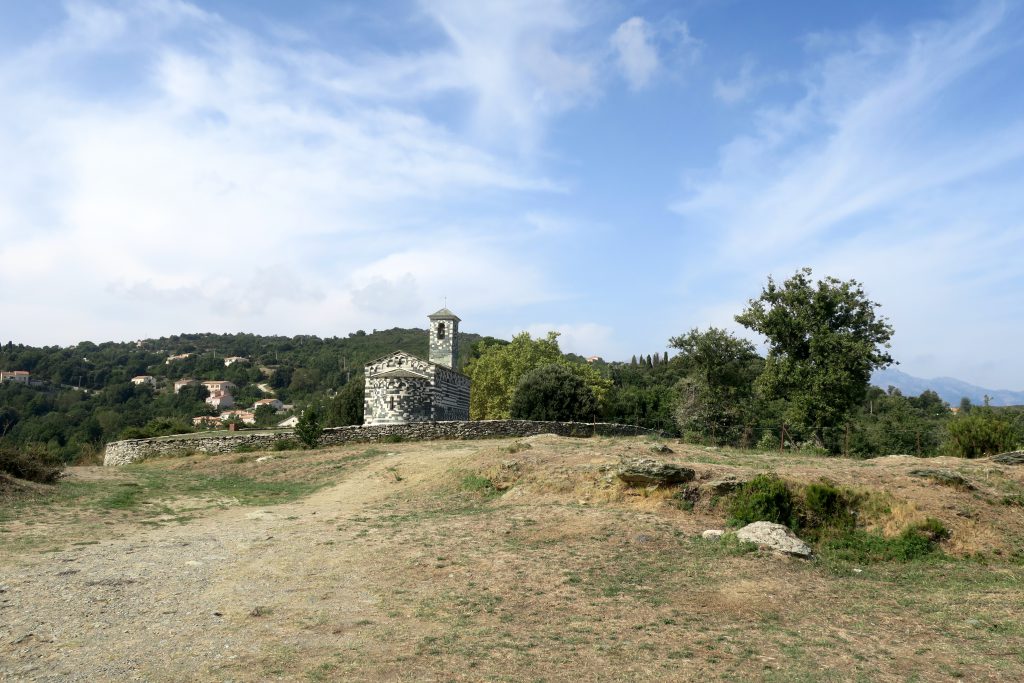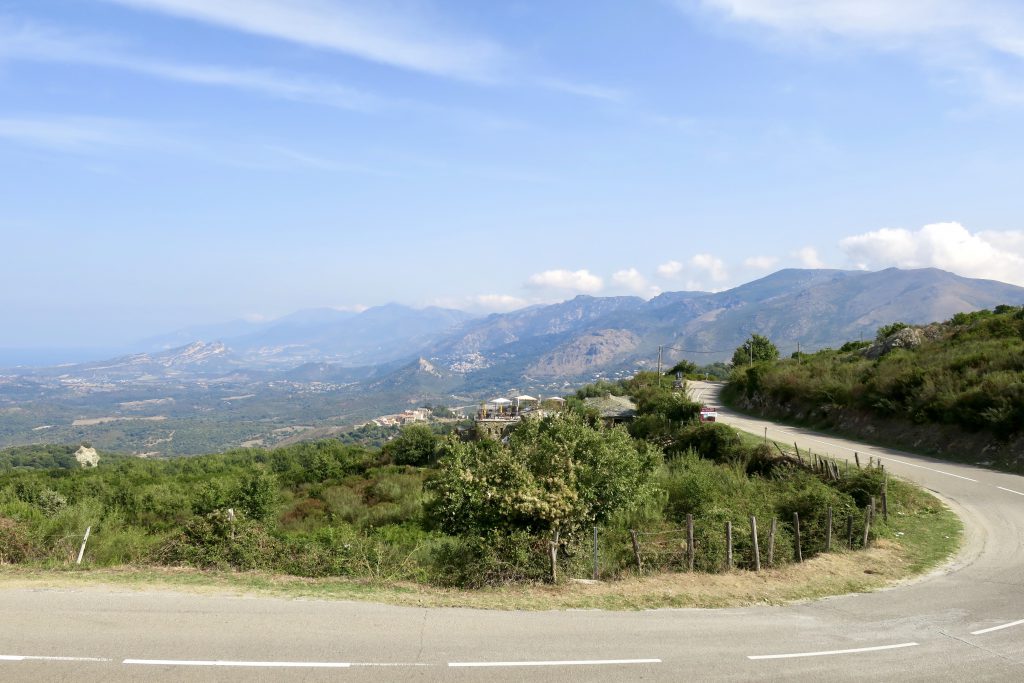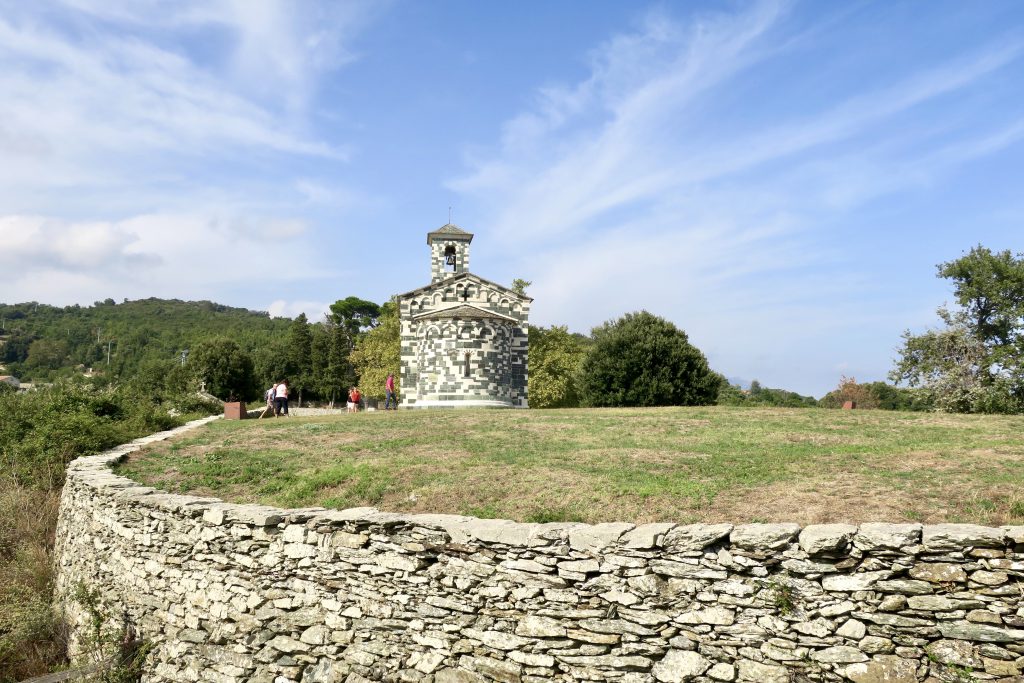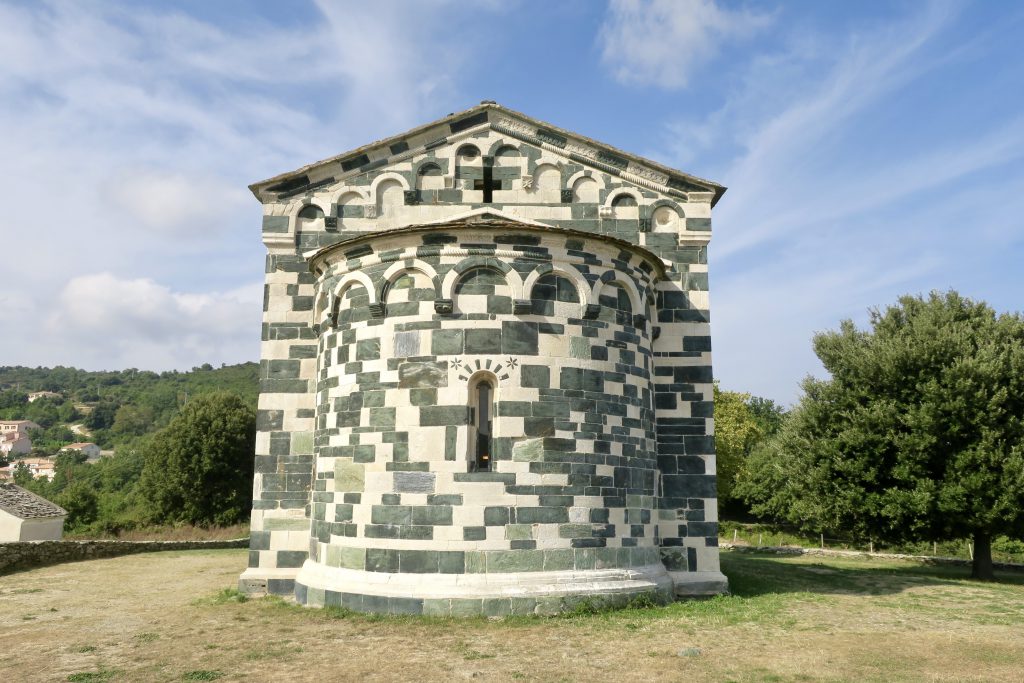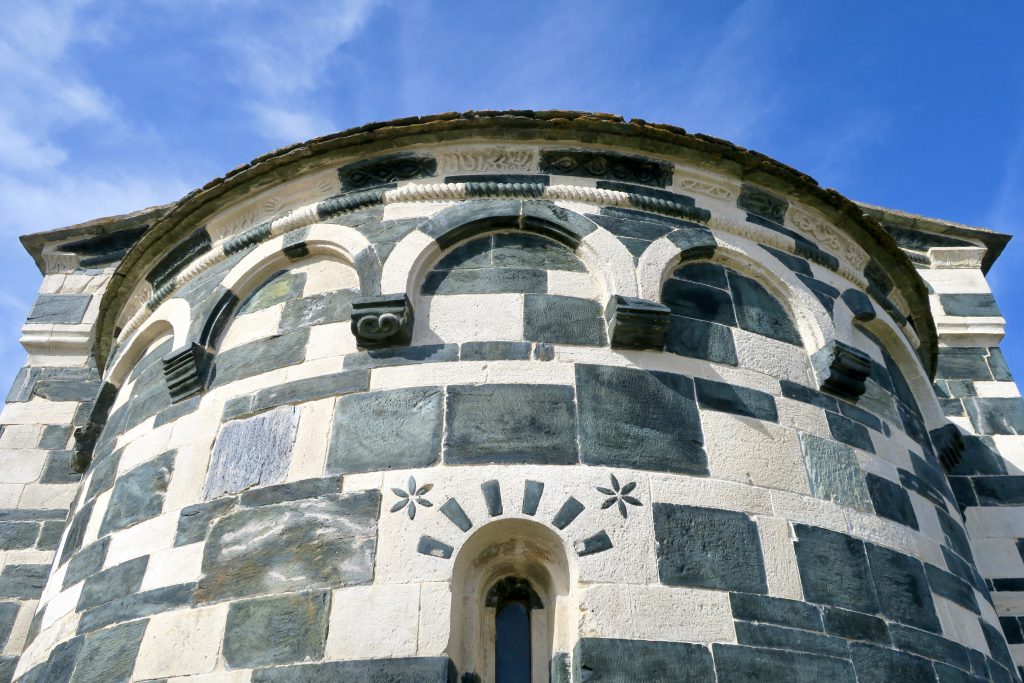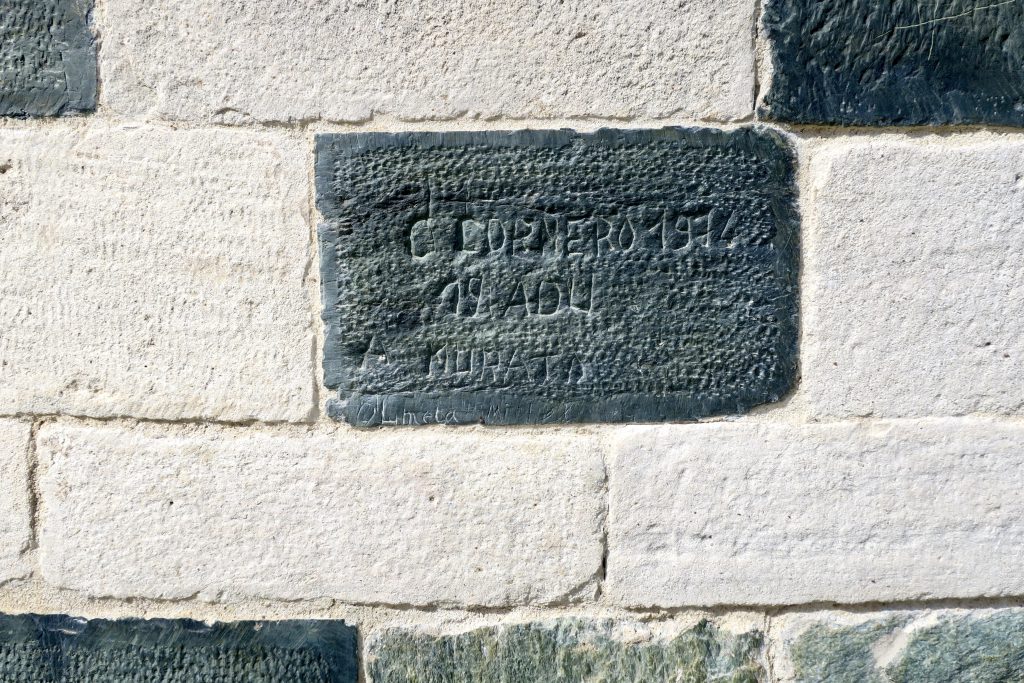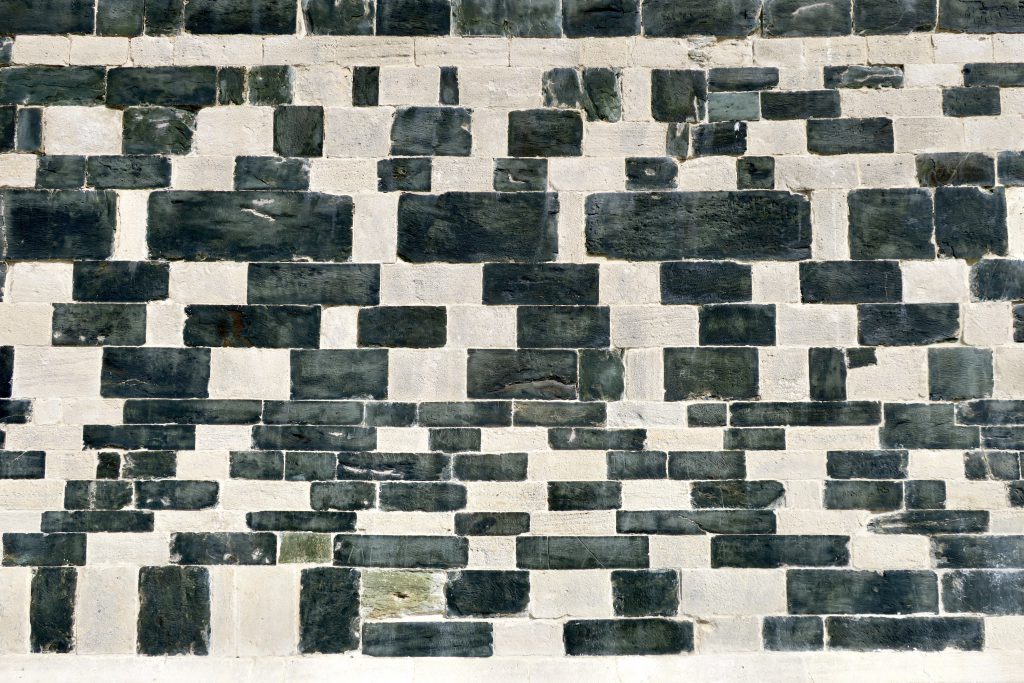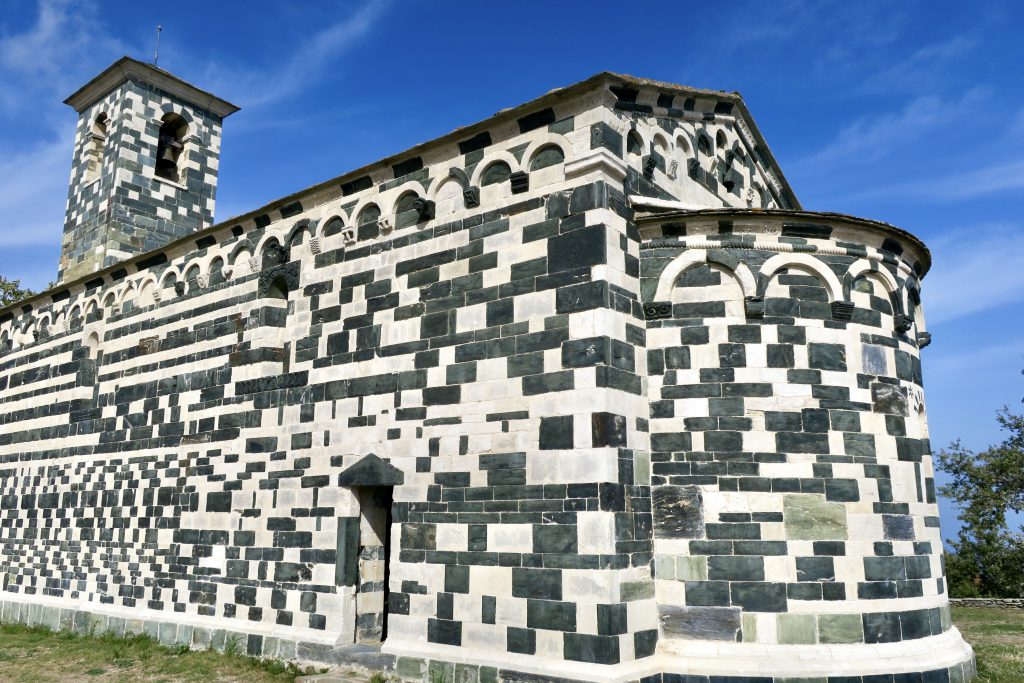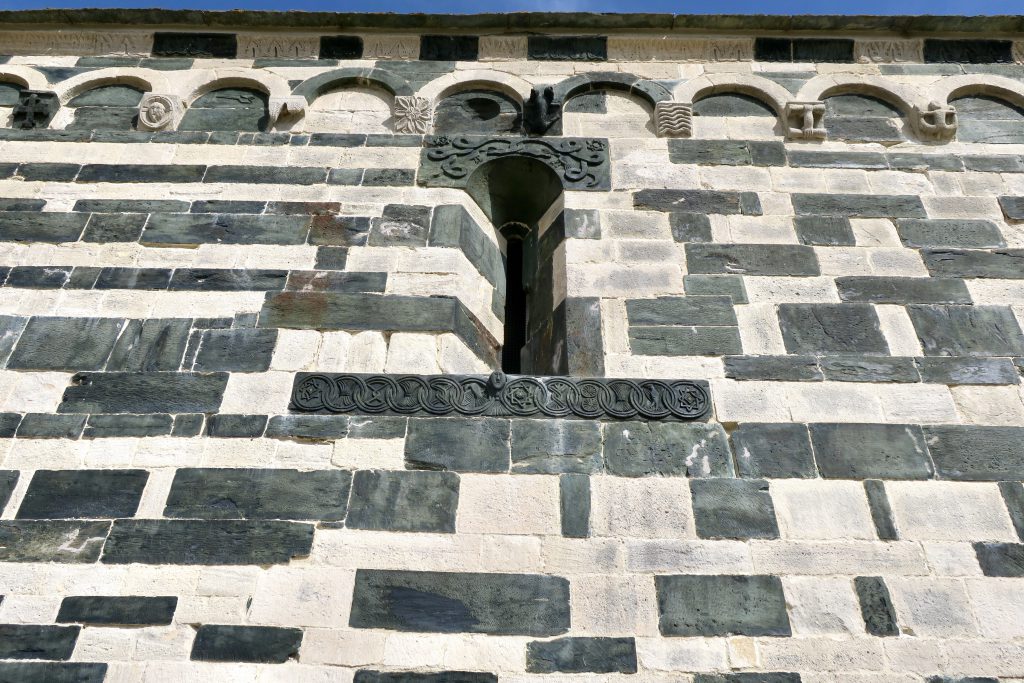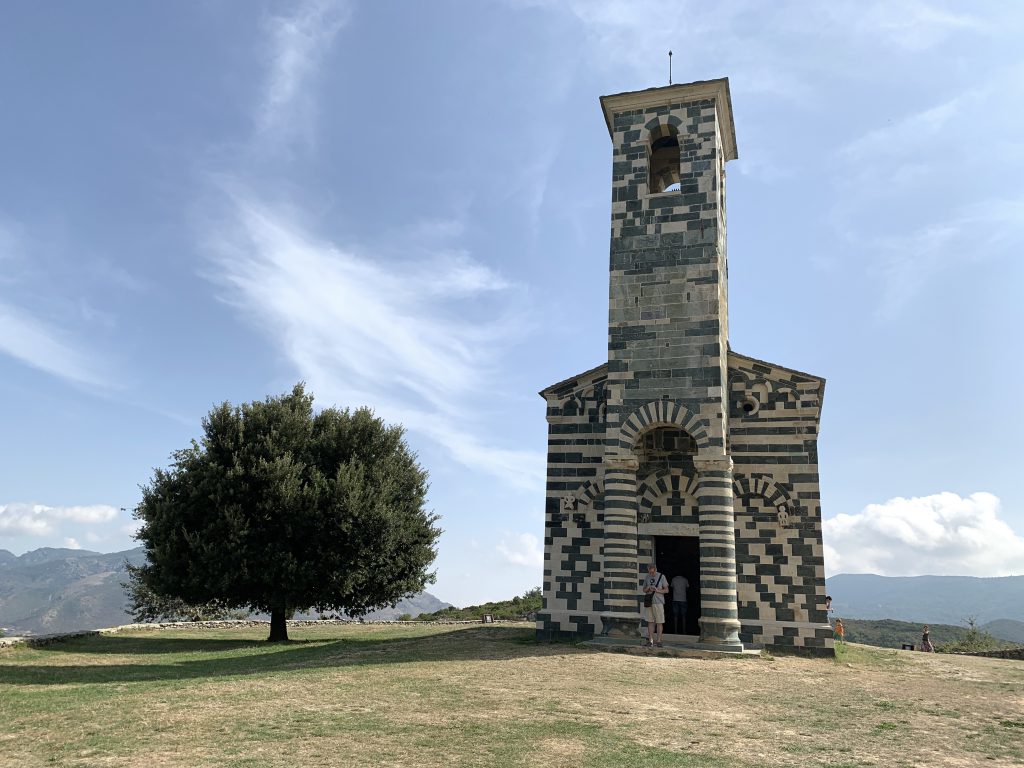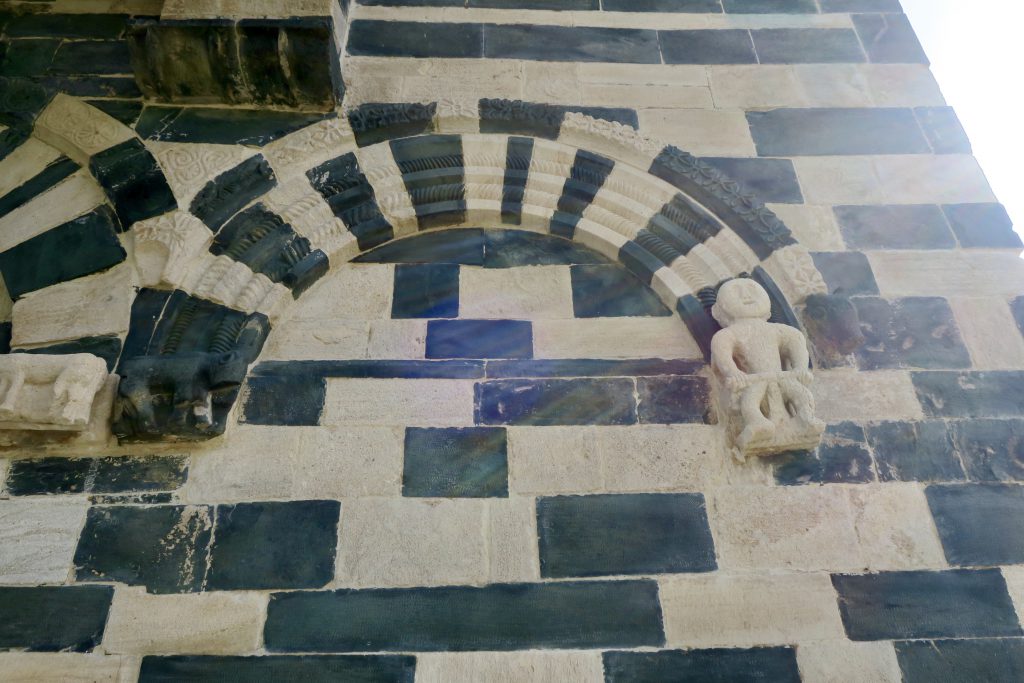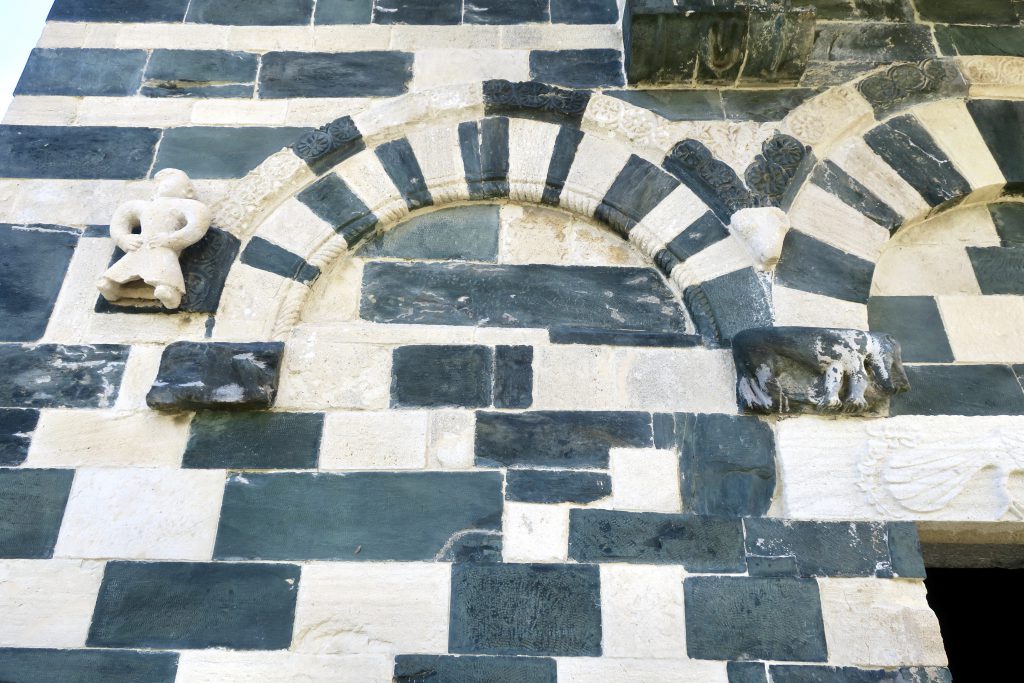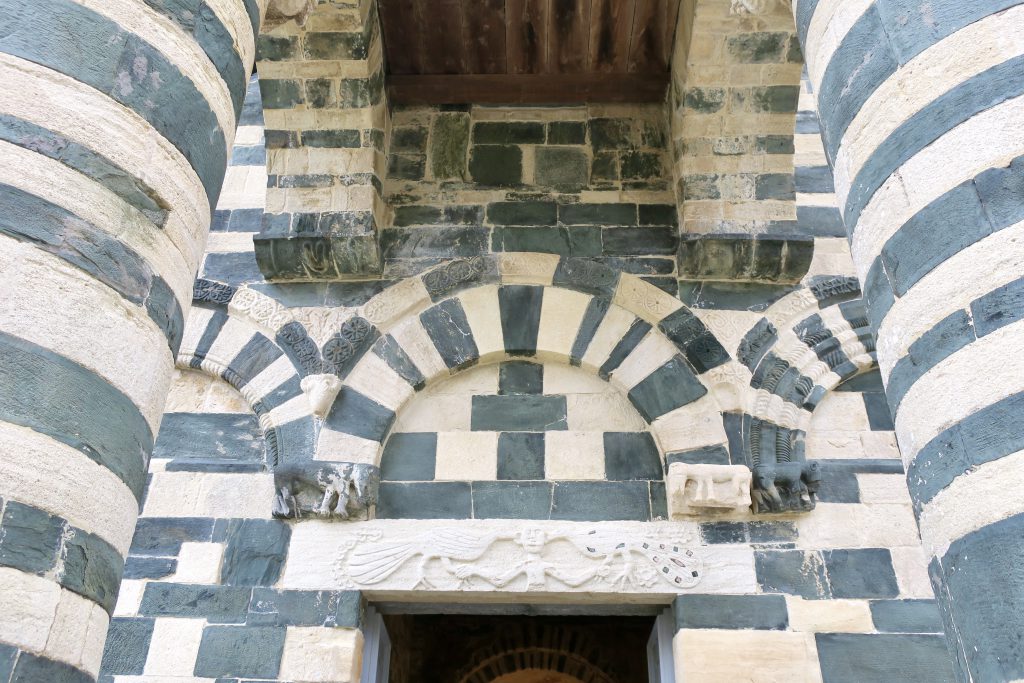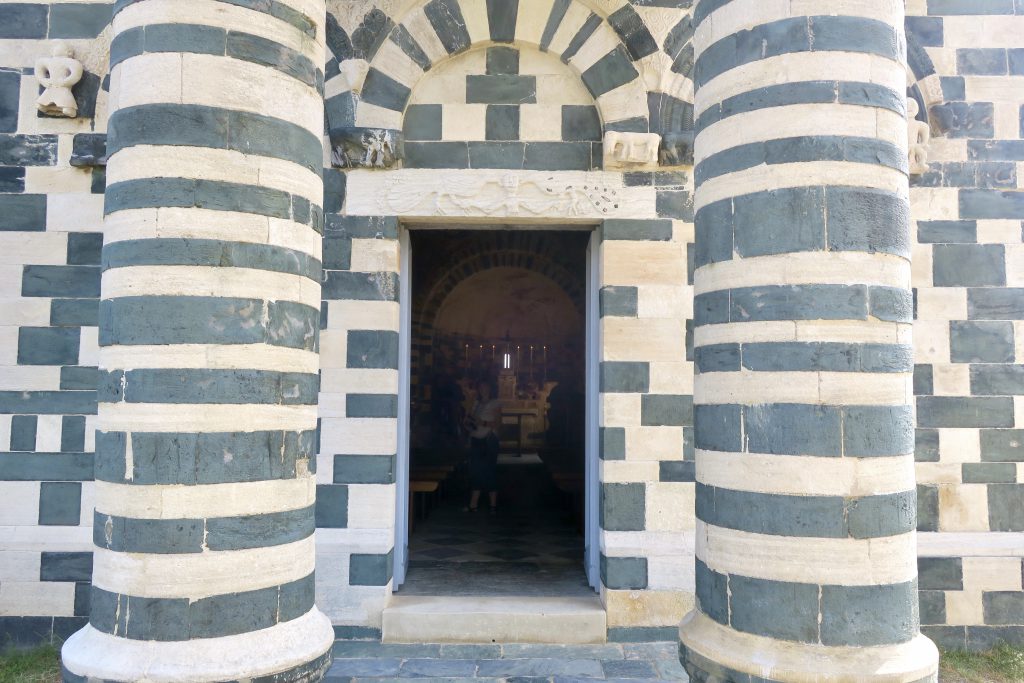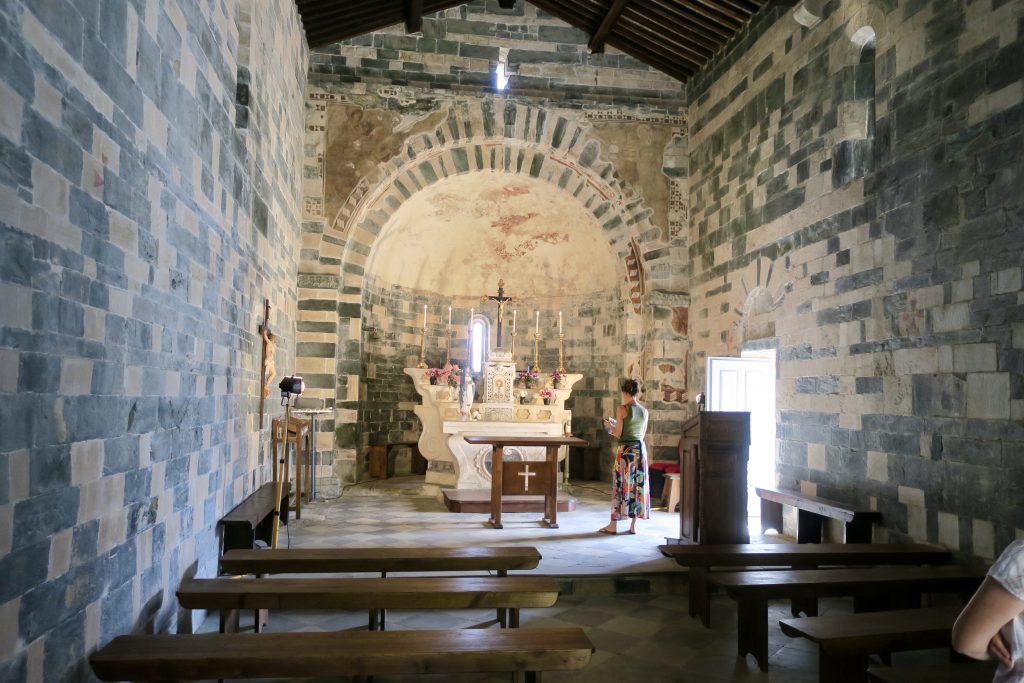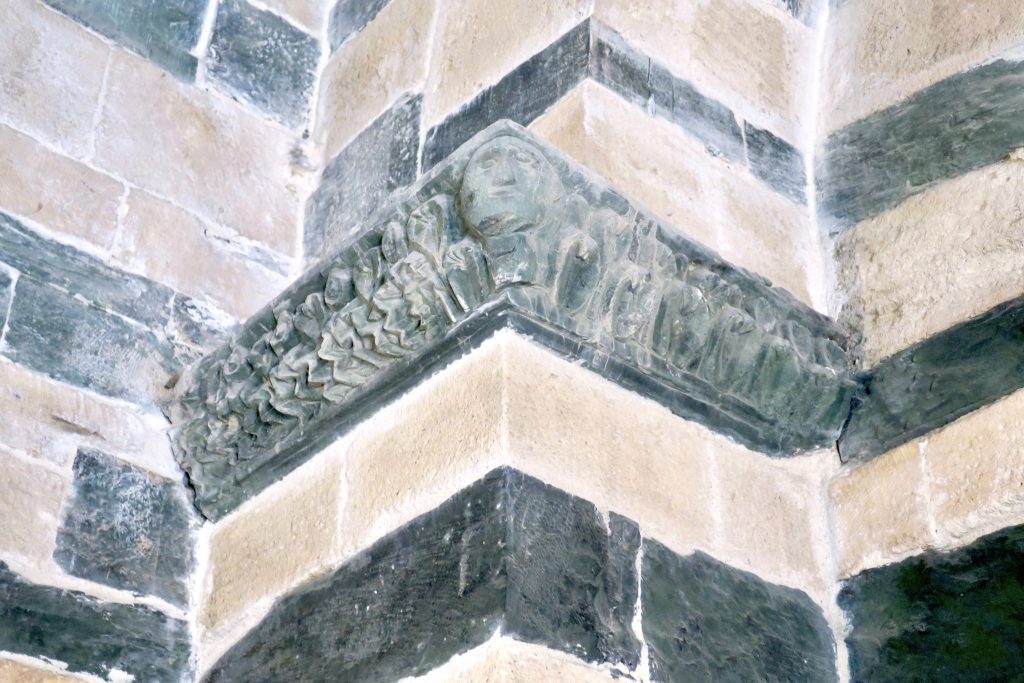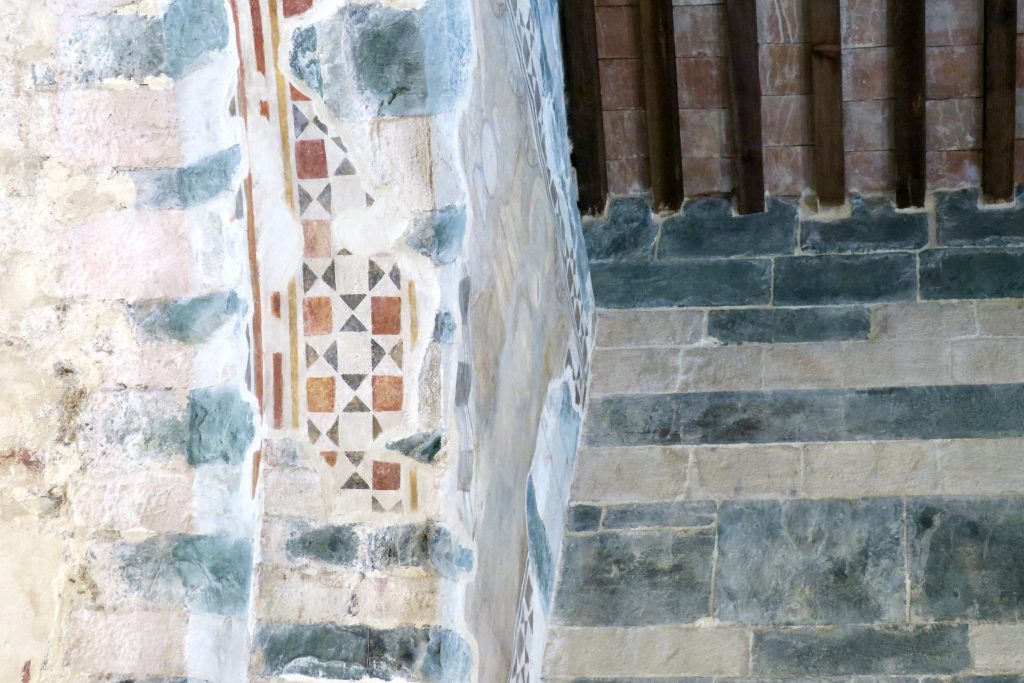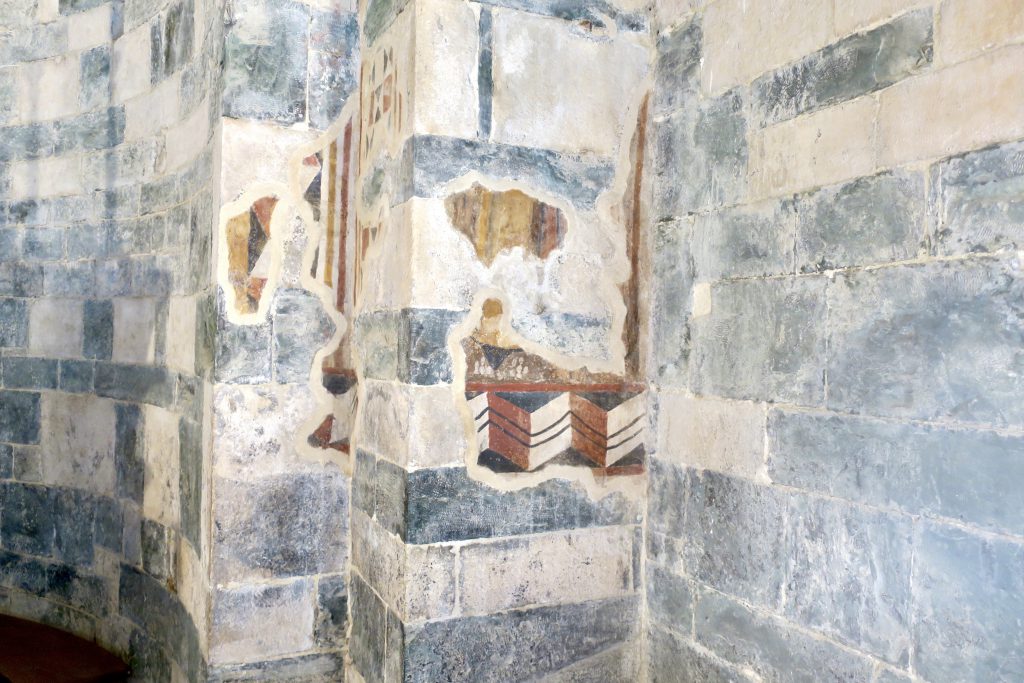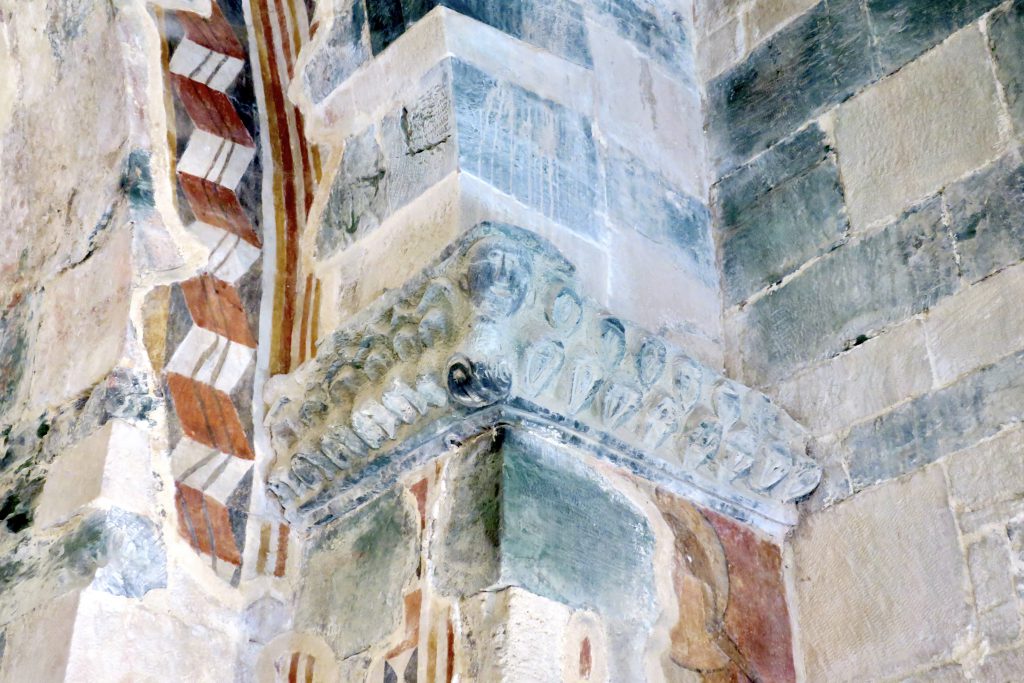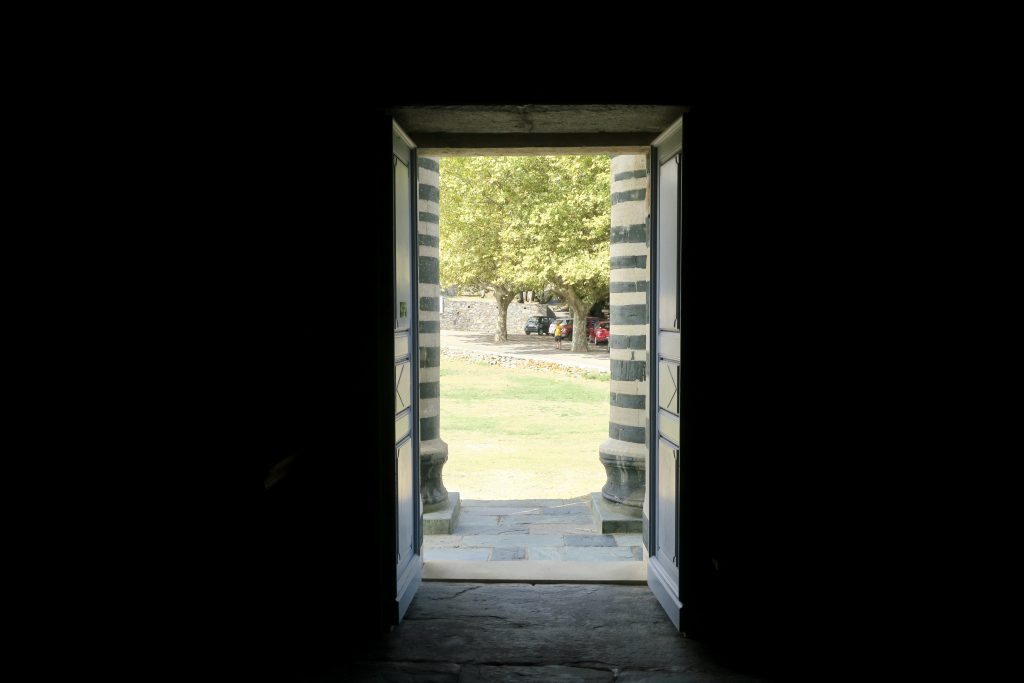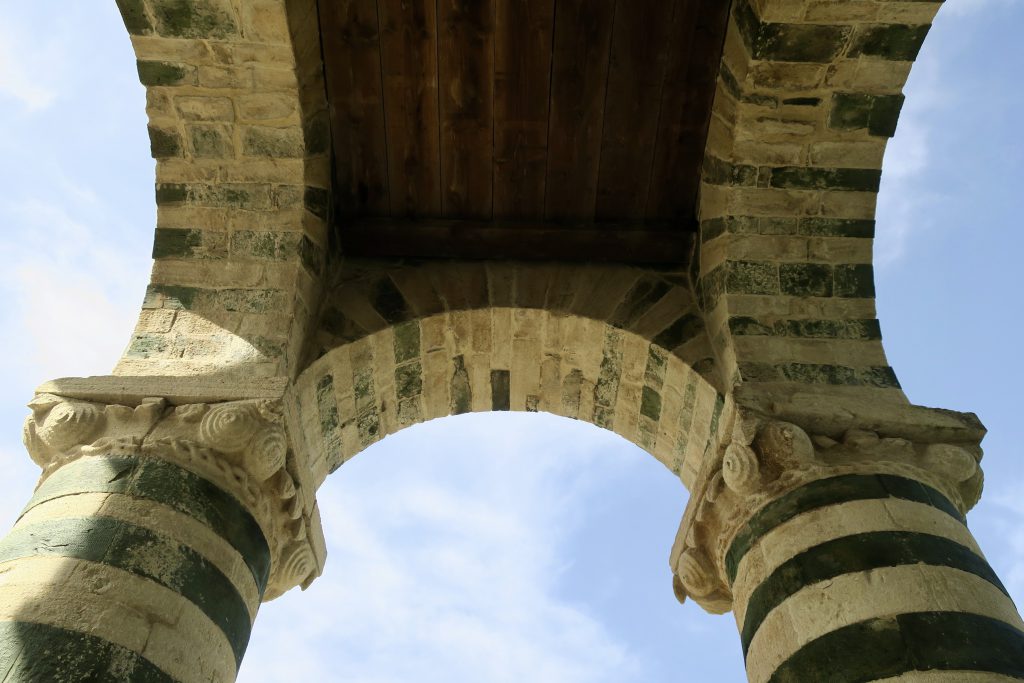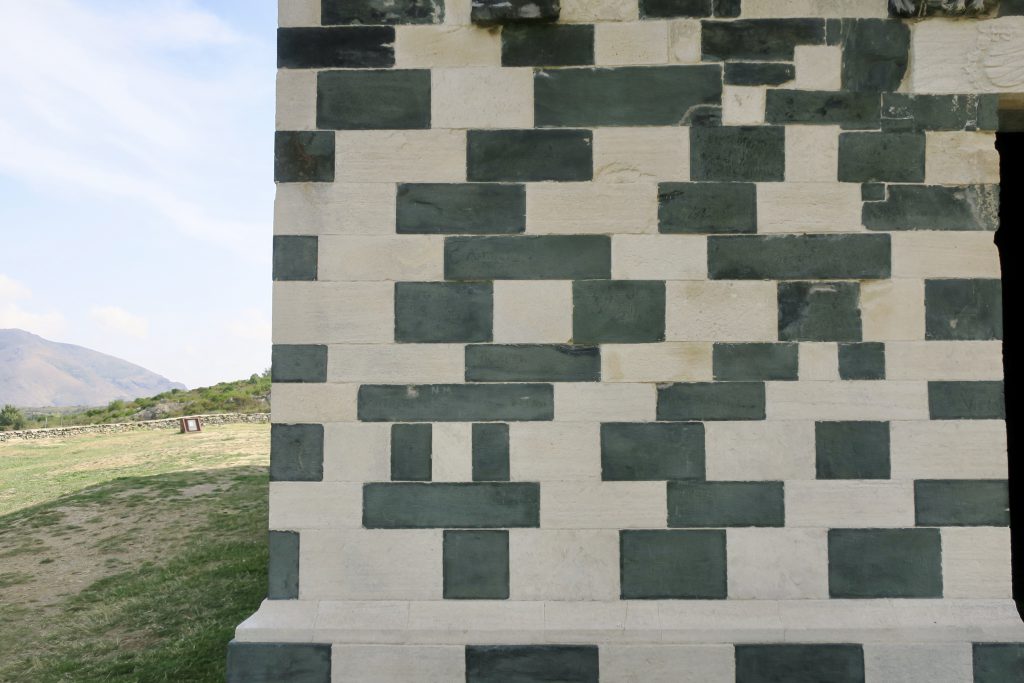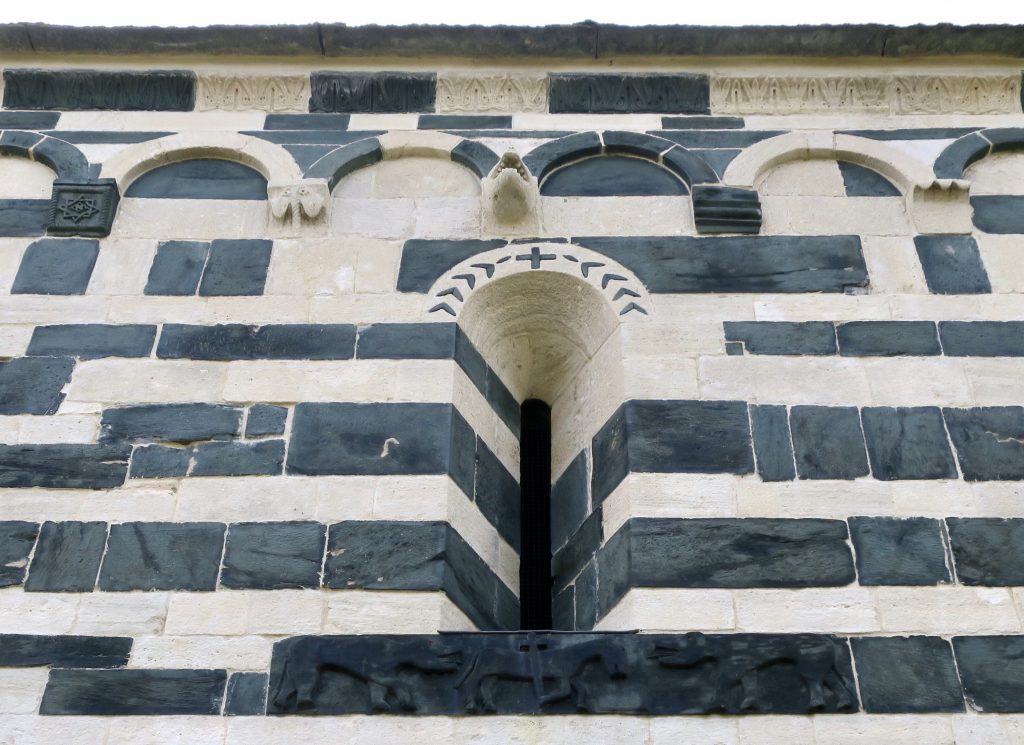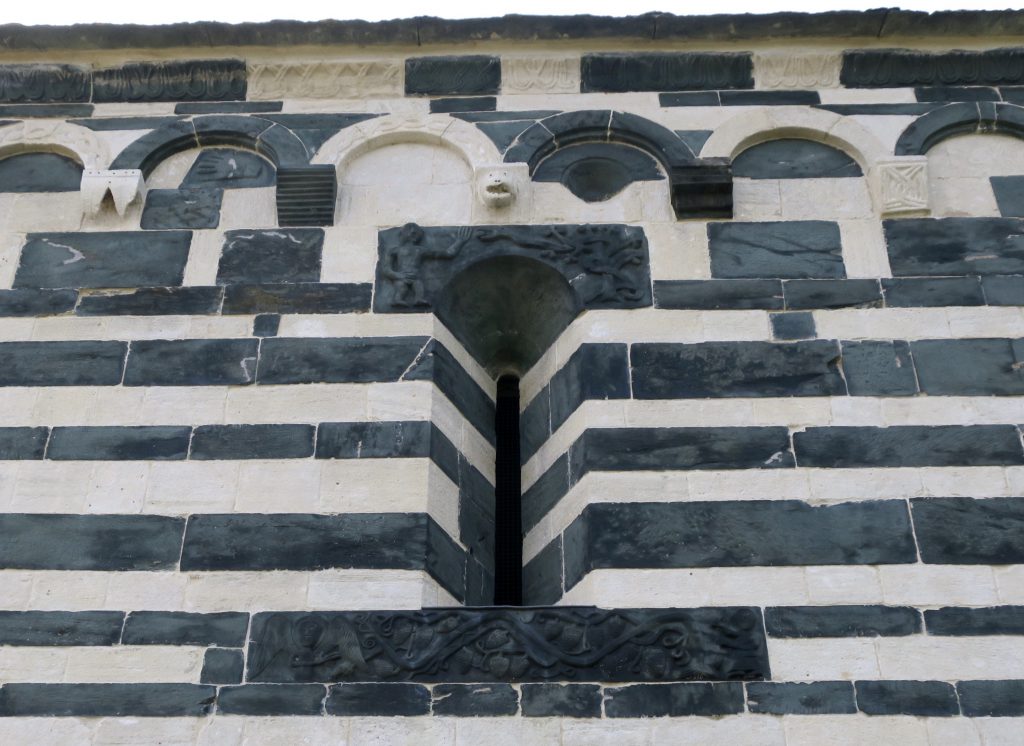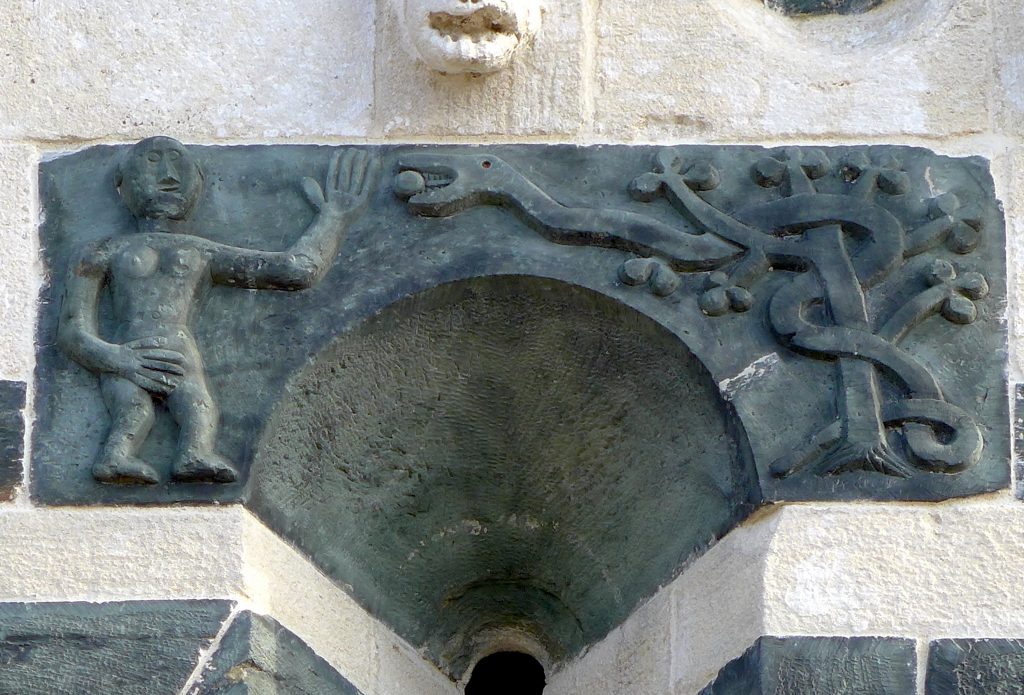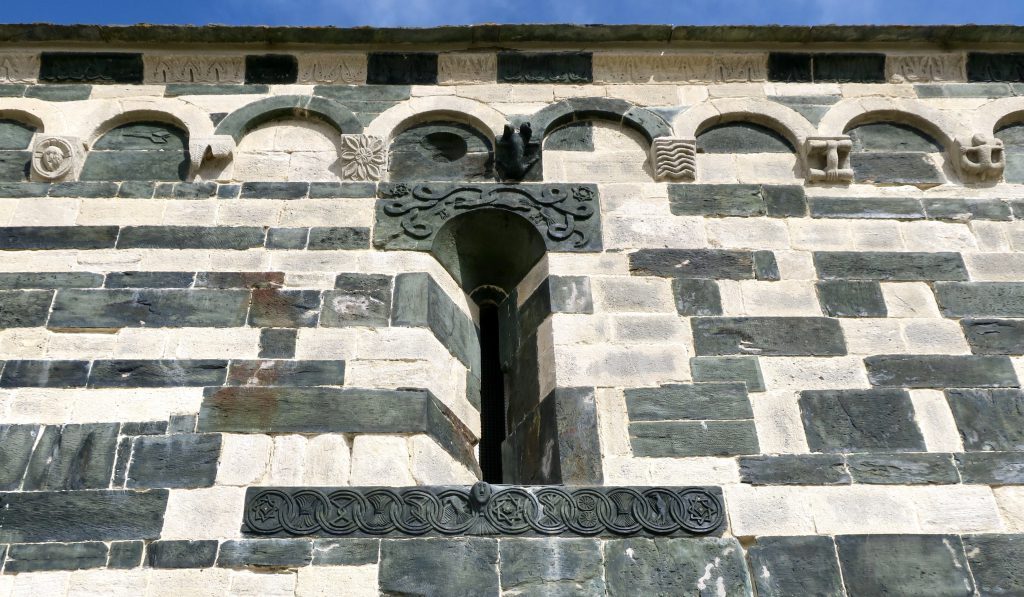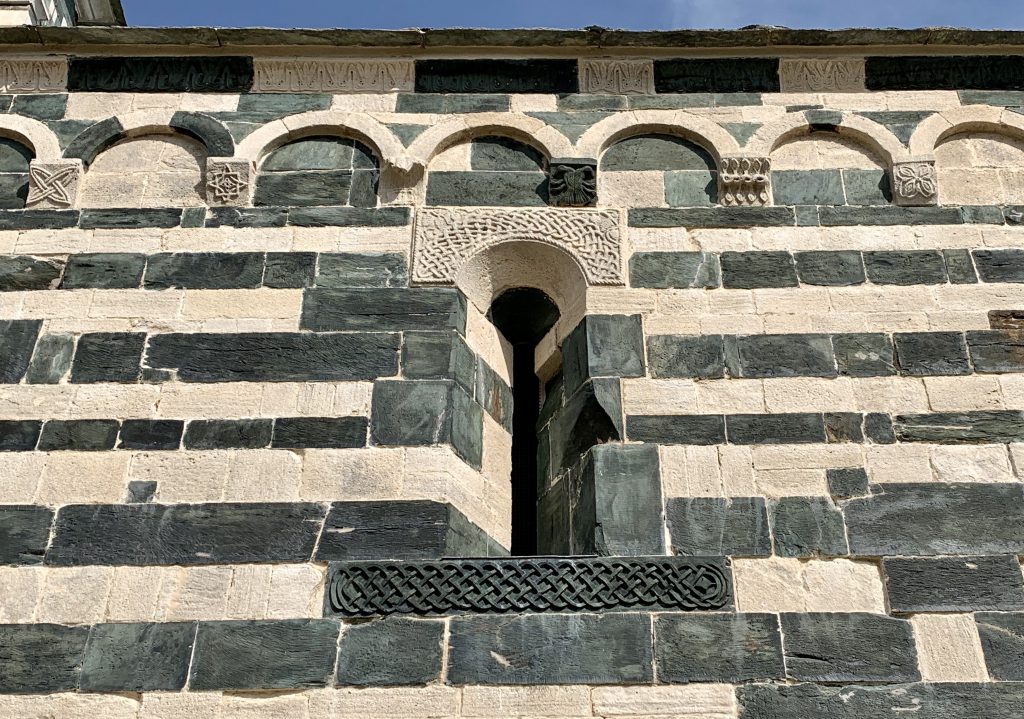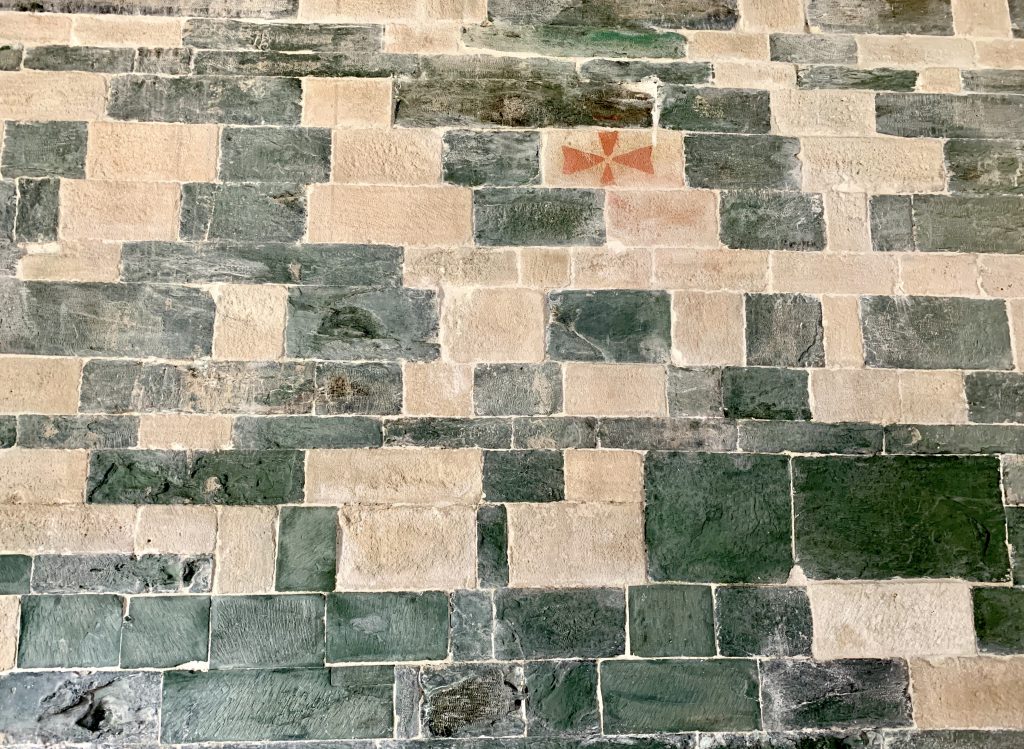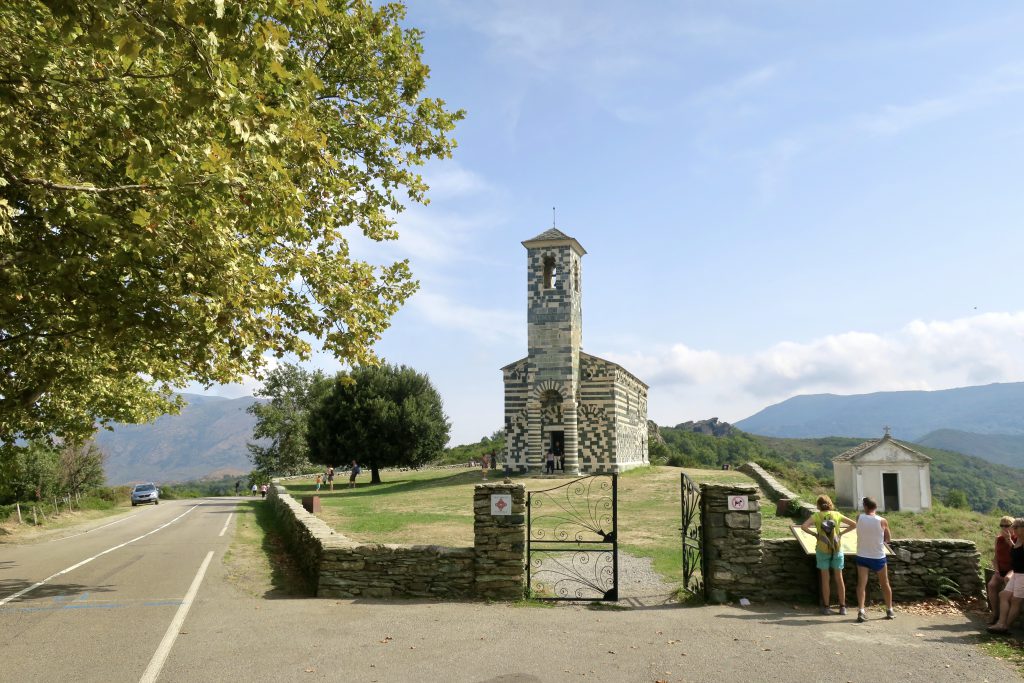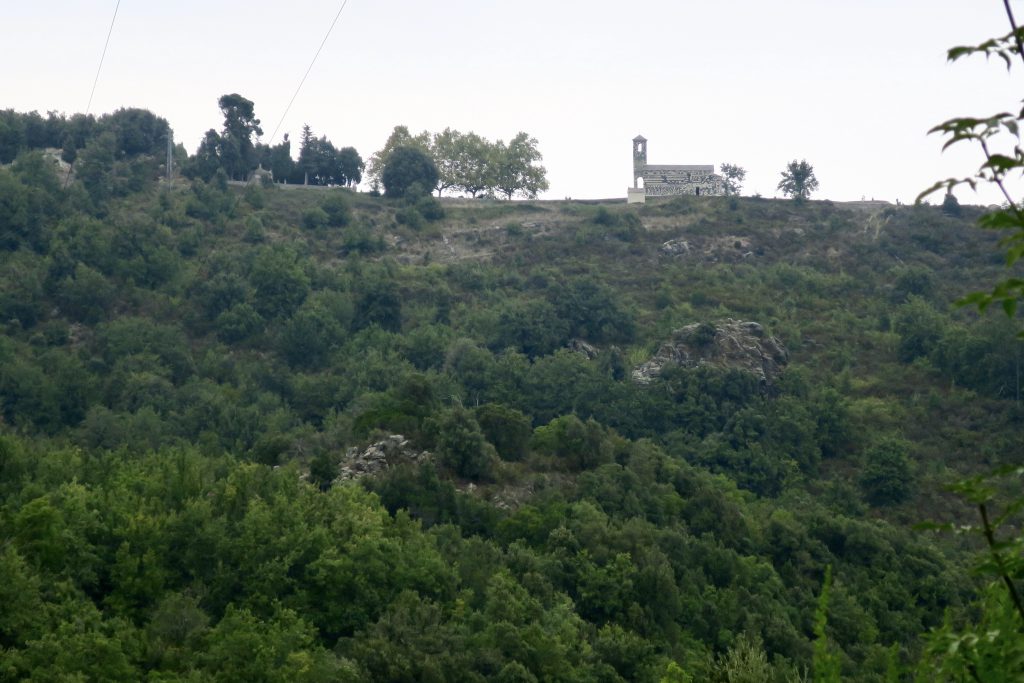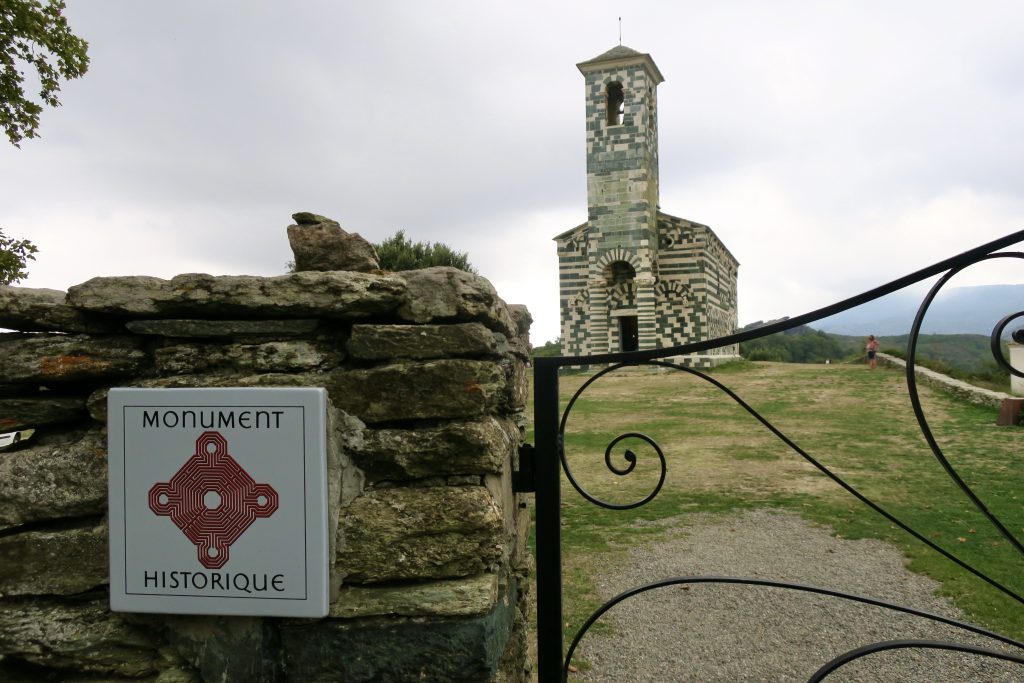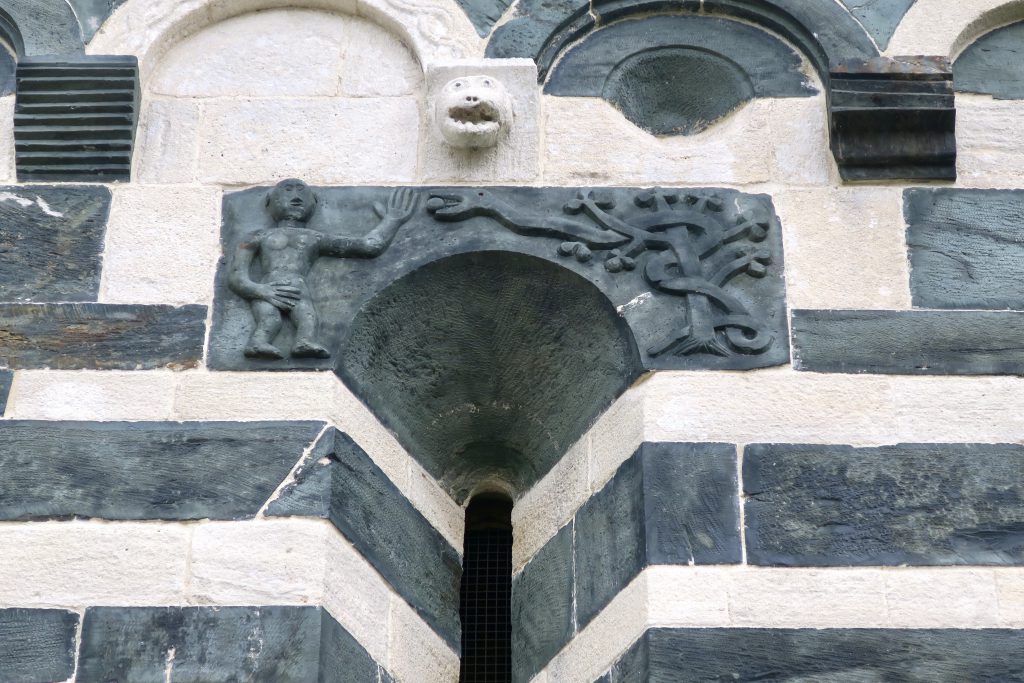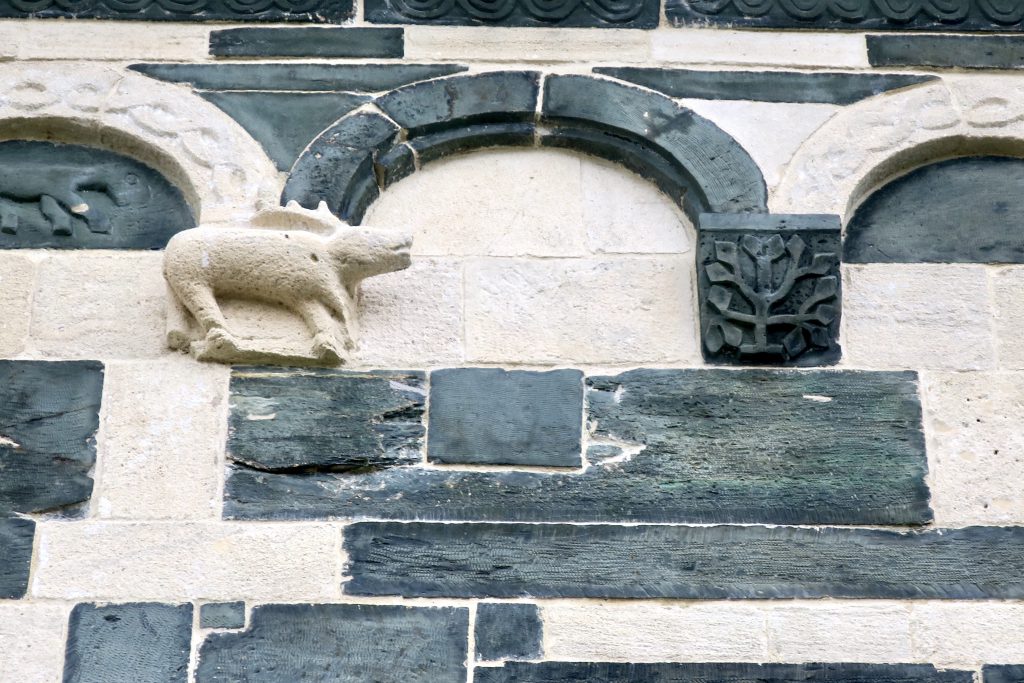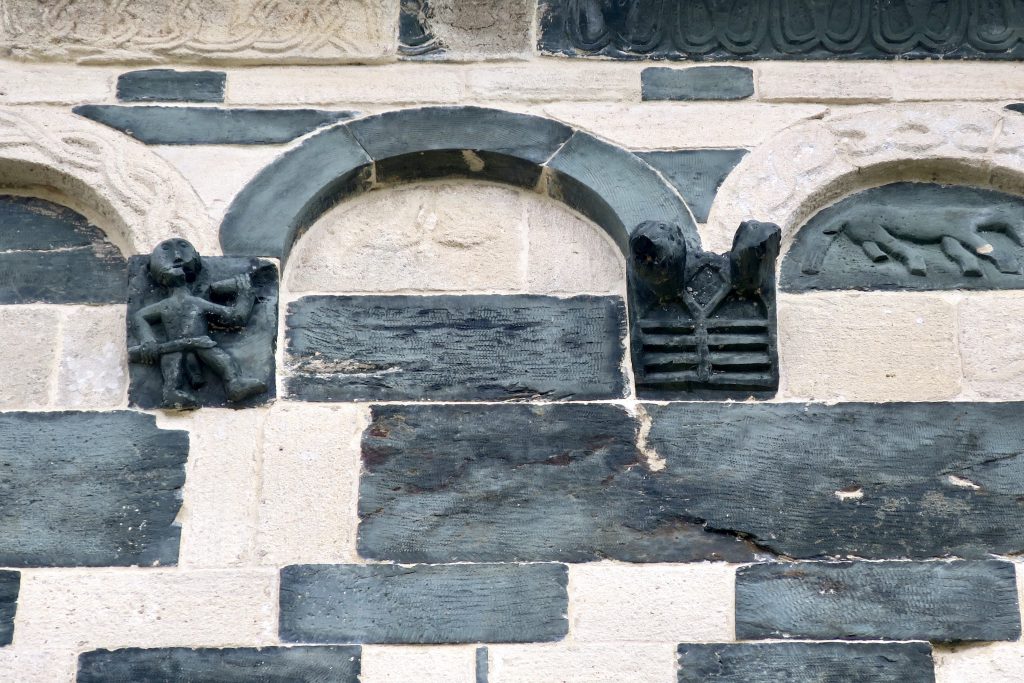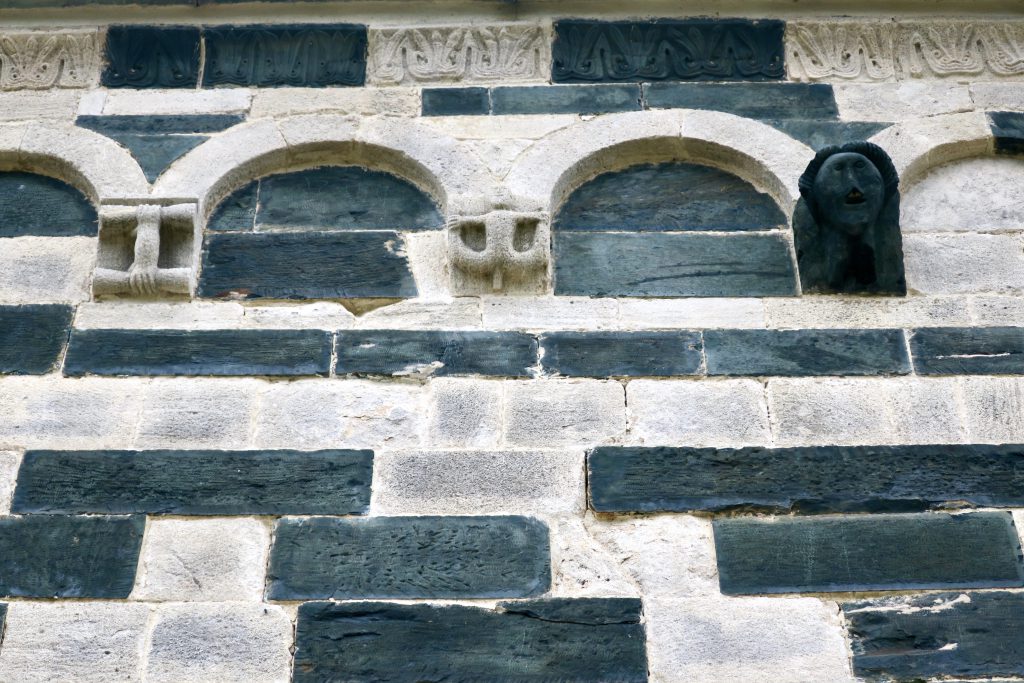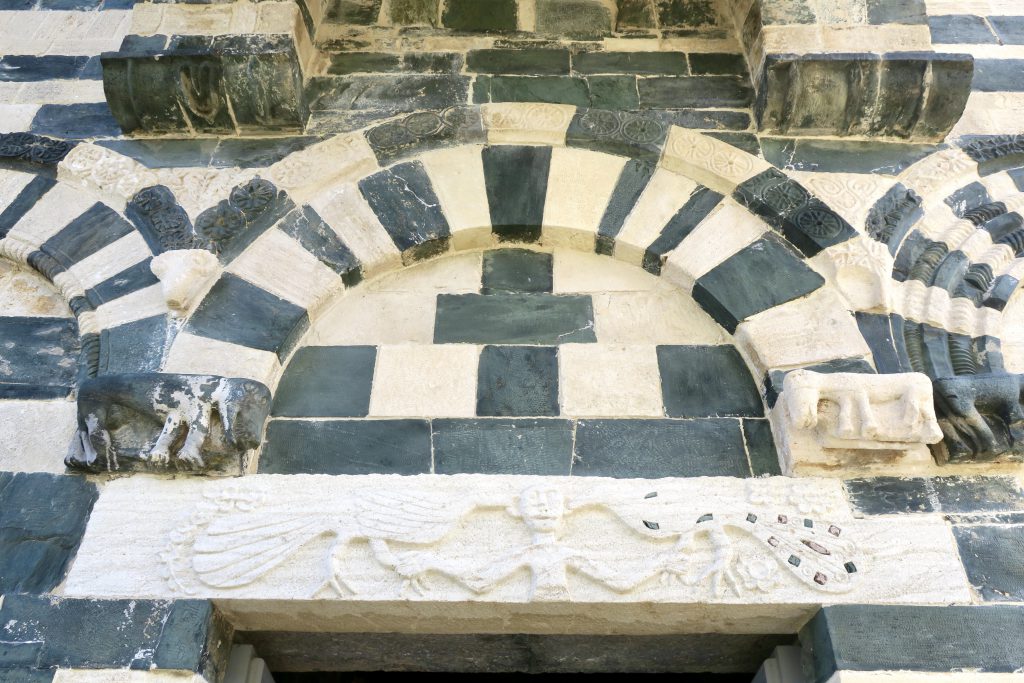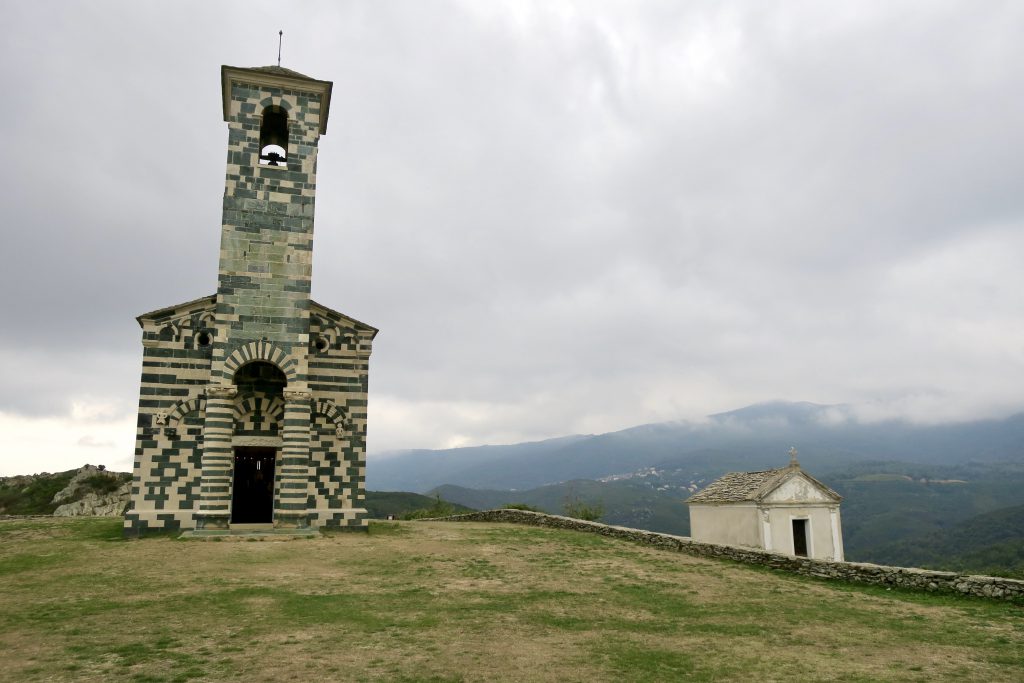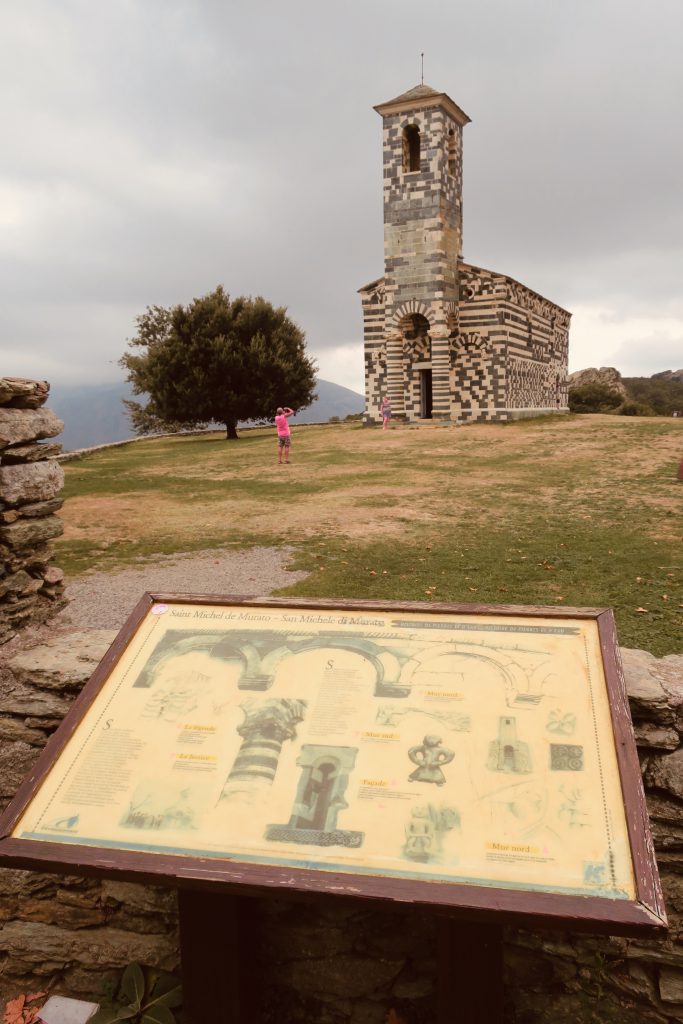Stuck inside my quarantine cell on a sunny April evening, sheltering from the coronavirus epidemic outside on the streets, sunlight and birdsong streaming through the open window, remembering how freedom of movement was once taken for granted, and how quickly we’ve adapted to our new limited horizons. I tell myself it won’t go on forever and escape into daydreams and memories of last year in Corsica. This was our first view of the church of San Michele just outside the village of Murato.
We were staying at St-Florent on the coast, and on this day we’d driven up the spectacular mountain road via the small town of Oletta, and through the Col de San Stefano with its panoramic belvedere, on our way to go walking in the Nebbio. This was our first stop, and we had to take a closer look.
The church stands alone on a raised bed with a surrounding dry stone wall, like a sculpture set on a plinth. It’s a fantastic pile of black and white stones, dazzling even when the sun is not at its brightest, looking like some kind of op art construction, except that this one was built in the twelfth century.
If you think about it too much, you might expect some sort of logic to the harlequin arrangement of stones, but these have been shaken up and shuffled in a random stack, and become all the more interesting and curious and beautiful for it. Think how the masons cut the stones to fit the plan, but selected the colours blindfold. It’s a boro-style patchwork using whatever came to hand.
If you continue south along the D5, however, you’ll come to an isolated grassy promontory standing proud against the mountains, topped by the most remarkable Pisan Romanesque church on Corsica, the green serpentine and white limestone San Michele de Murato (c.1280), covered in zebra stripes and chequerboard patterns. The proportions are distorted by a bell tower suspended over the porch in the 19th century, but the rest of the church is well preserved, lavishly decorated with sophisticated or naïve reliefs of fantastic animals, plus planets, stars, a mermaid and an awkward Eve already embarrassed by her nakedness as she takes the apple from the serpent’s mouth, and less churchly symbols – rolls of parchment, cut-off hands and scissors – believed to represent the law, as in Pisan times the churches doubled as tribunals. The interior is plain in comparison, although it does have a damaged 14th-century fresco of the Annunciation.
Dana Facaros & Michael Pauls: Corsica
It also looks like a ship painted in dazzle camouflage.
5km from Rapale after forking right onto the D162, the church of San Michele de Murato stands at a T-junction about 1km from the village of Murato. Set on a grassy level by itself, theatrical in its splendid isolation and somewhat elevated from the surrounding countryside, San Michele is one of the outstanding churches of Corsica. It is 12C Pisan Romanesque consisting of a single nave with the proportions of the facade spoiled to some extent by the addition of a bell tower in the late 19C. There are striking figures, human, quadruped, two intertwined snakes and birds, and Eve tempted by the serpent, in the blind arcading and windows.
The most arresting aspect of this church is the combination of colours in the stone of which it is built. Madame Geneviève Moracchini-Mazel says in ‘Corse Romane’ that ‘…the master masons used for this church a dark green stone from the bed of the nearby Bevinco River, a kind of serpentine marble with a close, compact grain, easy to work and offering great possibilities to sculptors’. San Michele exhibits the most imaginative polychromatic use of stone in walls where the predominant green-and-white blocks of serpentine are mixed with pink and yellow stone.
San Michele is less arresting inside but there are remains of a 15C fresco of the Annunciation on the arch of the apse. The whereabouts of the key to the church has varied during the years I have gone there but its safe keeping remains in the spirit at least with the curé of Murato who, like so many priests in Corsica, the rest of France and the UK, ministers to many parishes. I suggest enquiring at the house nearest to the church where the key was obtainable last time I was there.
Roland Gant: Corsica
The Snake gives Eve the Fruit of the Tree of Knowledge
At this point, blinking and dazzled we staggered from the churchyard and took a moment to reorient ourselves before continuing on our way up the road to Rutali, to take A Walk In The Nebbio.
※
And then later, on our way back, we saw it again from a distance, and it was impossible to drive past without stopping. We needed to take a second look, just to be sure our eyes had not been deceiving us.
We found a brochure inside, “Saint Michael’s Church of Murato”, translated into English.
The temptation scene, without Adam. The serpent offers Eve the forbidden fruit. She accepts with a hand that is represented disproportionately big (as to attract the viewers to the action). Satan is surrounded by the seven branches of the Tree of Life, and in this case, the tree is Mediterranean-like: it is a fig tree. Then, as Eve realises she is chased out of Heaven, she hides her nudity.
The Stag and the Paradise Tree.
The naked man who runs with a knife, or a stick: the old man, the male still tangled up in his passions… the scissors that cut the tongue of the slanderers…
The arm with two hands to read a scroll… The merman turns into an acrobat with his feet in the air… The head of a man represents all men, humans…
The peacocks, as seen in the Middle East on each side of the Tree of Life located in Heaven, are represented here on each side of a human being. The layout is here typical, the female peacock to the left and the male to the right, recognisable by his eyes represented by gems. The myth of Juno, Zeus’ wife, that had Argos, the 100-eyed giant, watch Zeus, and that had taken the eyes following the murder of Argos to place them on the male peacock is used here as a way to watch and discipline: the eyes of faith watch the door to the sanctuary. The peacock, preacher with a loud voice, forces men to listen to the Divine word. It represents the spiritual duality of men, the immortality and incorruptibility of the soul. Here, men are placed within an interactive duality: that of body and soul; yin and yang, or male and female. Those are two interactive principles that form the basis for unity and give an image of the Christian Trinity. Through this sculpture, the man represented holds dear to keep this principle by strongly holding both legs of the birds. In the Middle Ages, the faith in the peacock flesh not being subject to decay makes it a symbol of endless life.
As the cloud of unknowing descended, we left only slightly more confused than when we’d arrived. But our eyes were even more delighted than before. Their black and white bewilderment now beheld a trinity of transcendental multicoloured bedazzlement, a three-in-one lightning rod of unbecoming. The storm-dark sky discharged through the tower, illuminating the church from within, it solarized the stones into stained-glass windows, buzzing, flickering as the heat dissipated and the building was just briefly a collection of brightly coloured lego bricks… Or was that just the flash of his camera?
※


